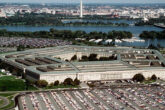July 10, 2014
The Army’s next enemy? Peace.
Retired Army Lt. Gen. David W. Barno is a senior fellow and co-director of the Responsible Defense Program at the Center for a New American Security. From 2003 to 2005, he served as overall commander of U.S. and coalition forces in Afghanistan.
The Army is emerging from 13 years of war, battle-tested but weary. It is under pressure from budget cuts, the return of nearly the entire force to domestic bases, and a nation wary of deploying land power after two long conflicts. Yet perhaps the most important challenge facing the Army is not about finances, logistics or public opinion, but about culture — its own.
A conflict looms between the Army’s wartime ethos of individual initiative and the bureaucratic malaise that peacetime brings. The Army is about to make an abrupt shift: from a sizable, well-resourced, forward-deployed, combat-focused force to a much smaller, austerely funded, home-stationed service. Training and preparation for war will take the place of actually waging it. The Army is moving from 13 straight years of playing in the Super Bowl to an indefinite number of seasons scrimmaging with itself.
While few in the service would prefer unending wartime deployments over some semblance of peace, the end of full-scale conflict brings unique challenges to those in uniform — especially to those millennials in active service who, since 2001, have experienced nothing but the adrenaline rush of an Army at war. This transition could weaken the Army’s warfighting capabilities and drive talented, combat-experienced young leaders from the force.
Read the full article in The Washington Post's Outlook section.
More from CNAS
-
The Department of Defense’s Breakthrough Nuclear Moment Risks Slipping Away
Unless they act, the Department of Defense’s breakthrough nuclear moment may vanish before it really happens....
By Will Rogers
-
Sharper: The Budget
The defense budget and its $715 million price tag accounts for much of the U.S. government's discretionary spending every year, but where will (and should) this money go in th...
By Anna Pederson
-
Three elements of Army’s iron triangle equally critical for United States, says defense analyst
Billy Fabian, adjunct senior fellow for the Defense Program at the Center for a New American Security and senior analyst at Govini discusses the Army's iron triangle on Govern...
By Billy Fabian
-
The Fiscal Year 2022 Defense Budget and Future Options for the Pentagon
Submitted Written Testimony I. Introduction Chairman Smith, Ranking Member Rodgers, distinguished members of the committee and staff thank you for inviting me to testify today...
By Stacie Pettyjohn



